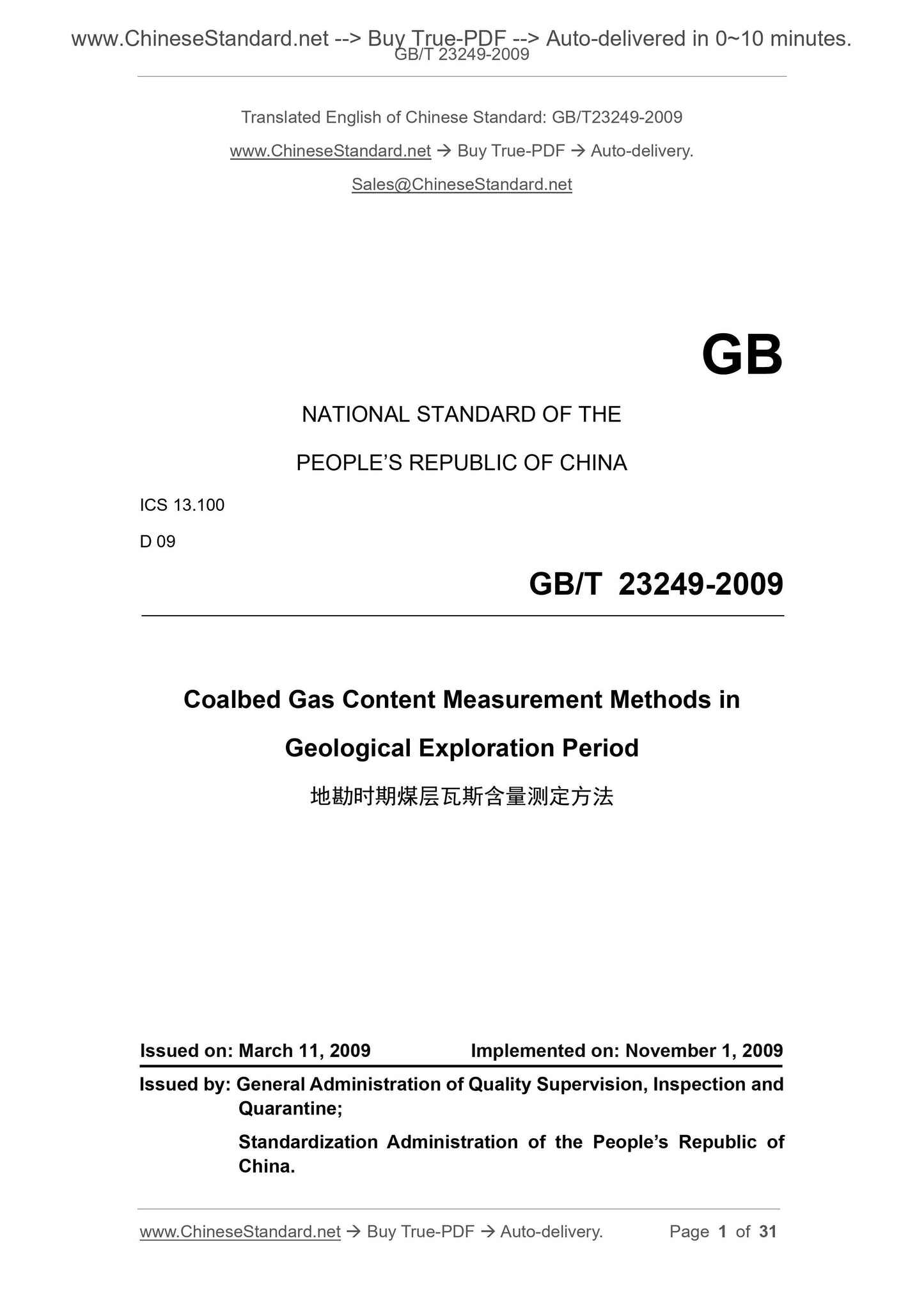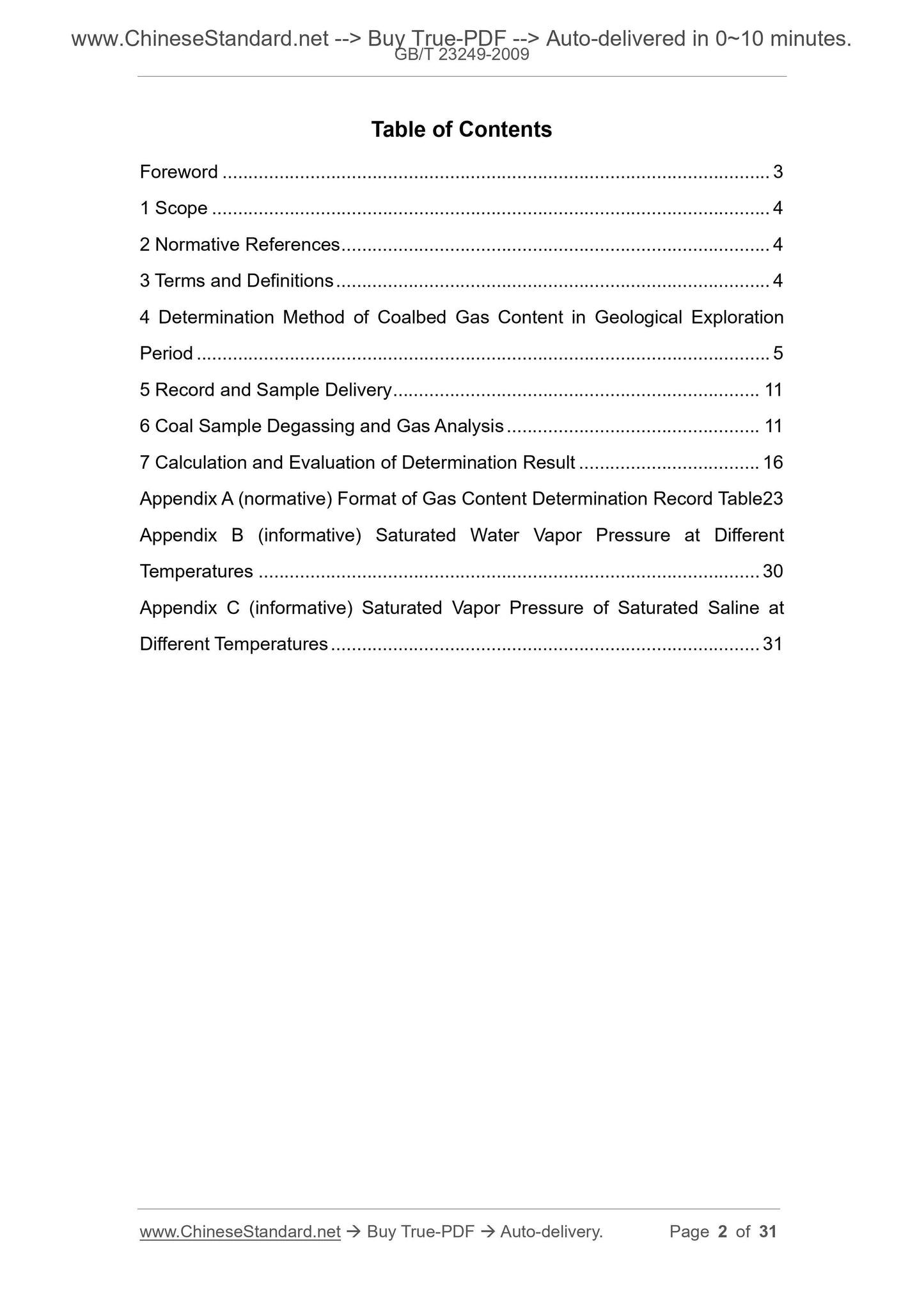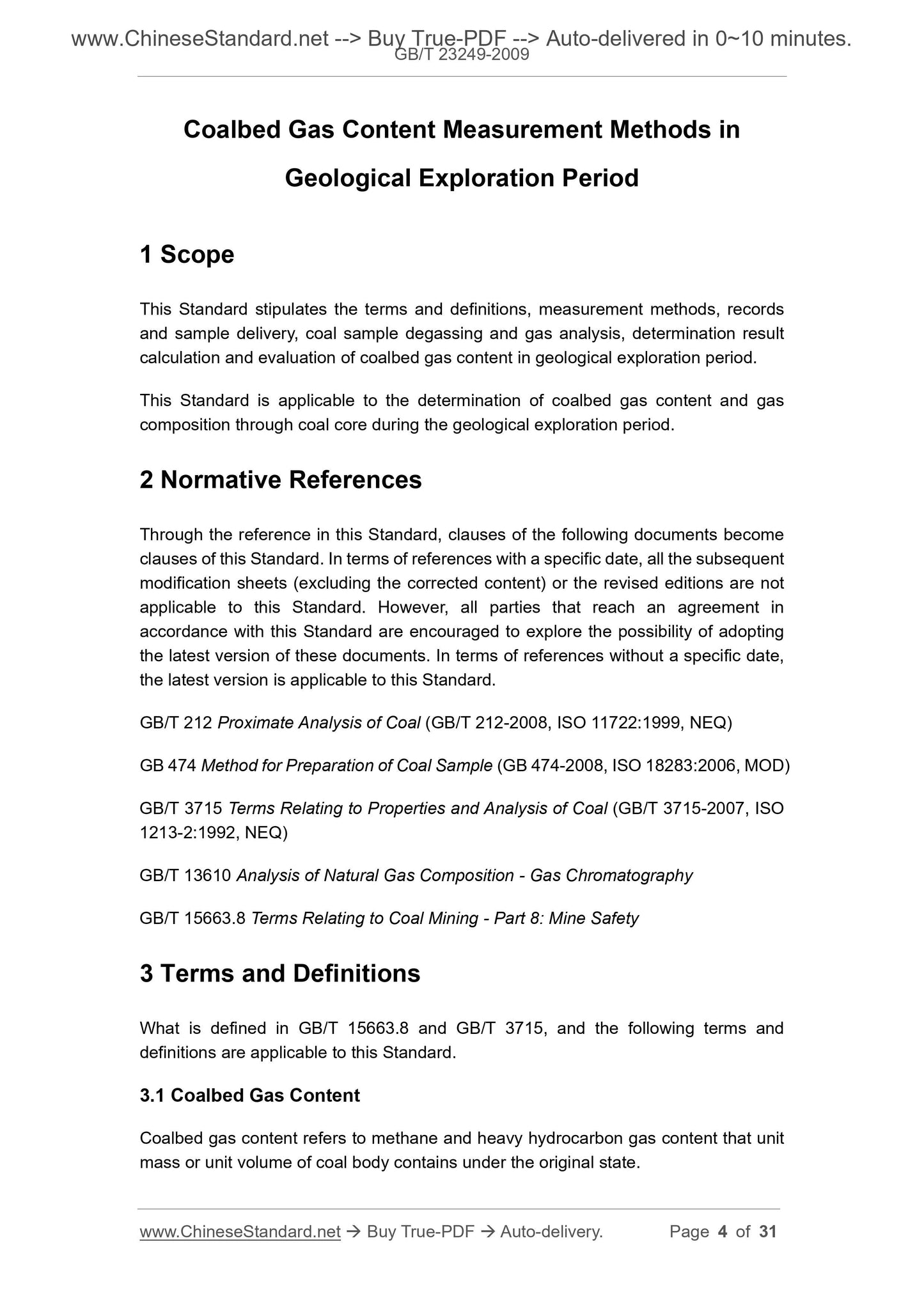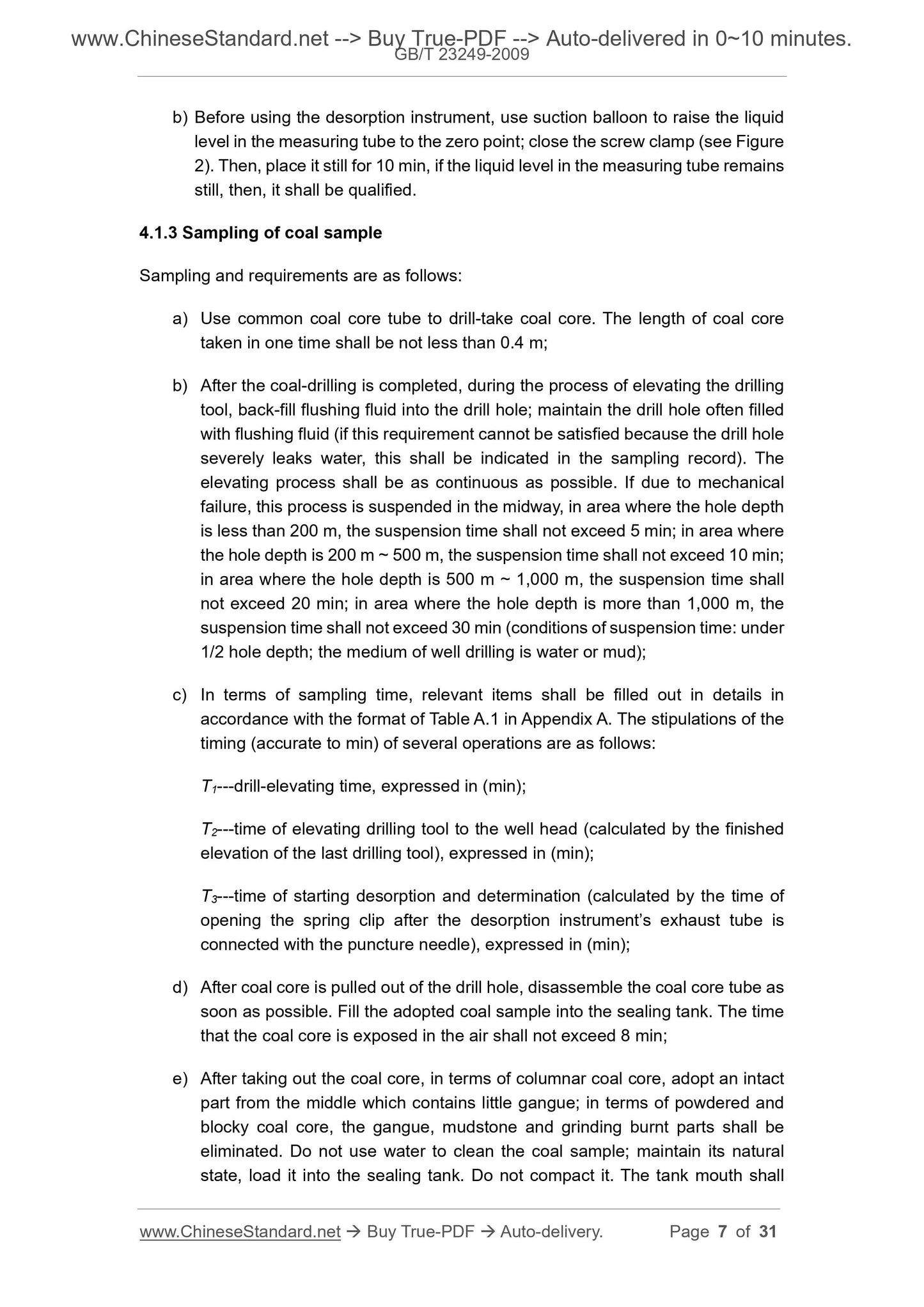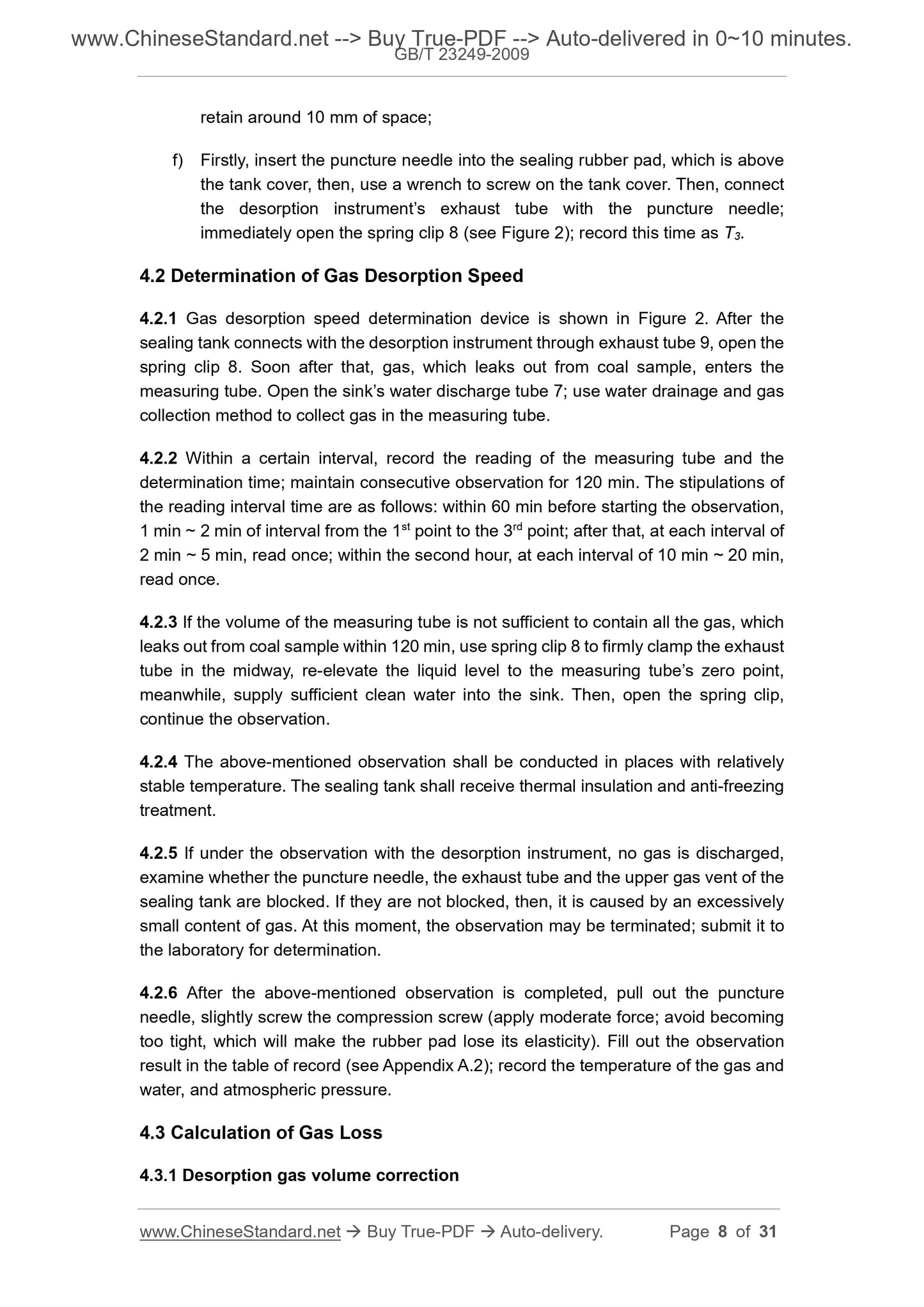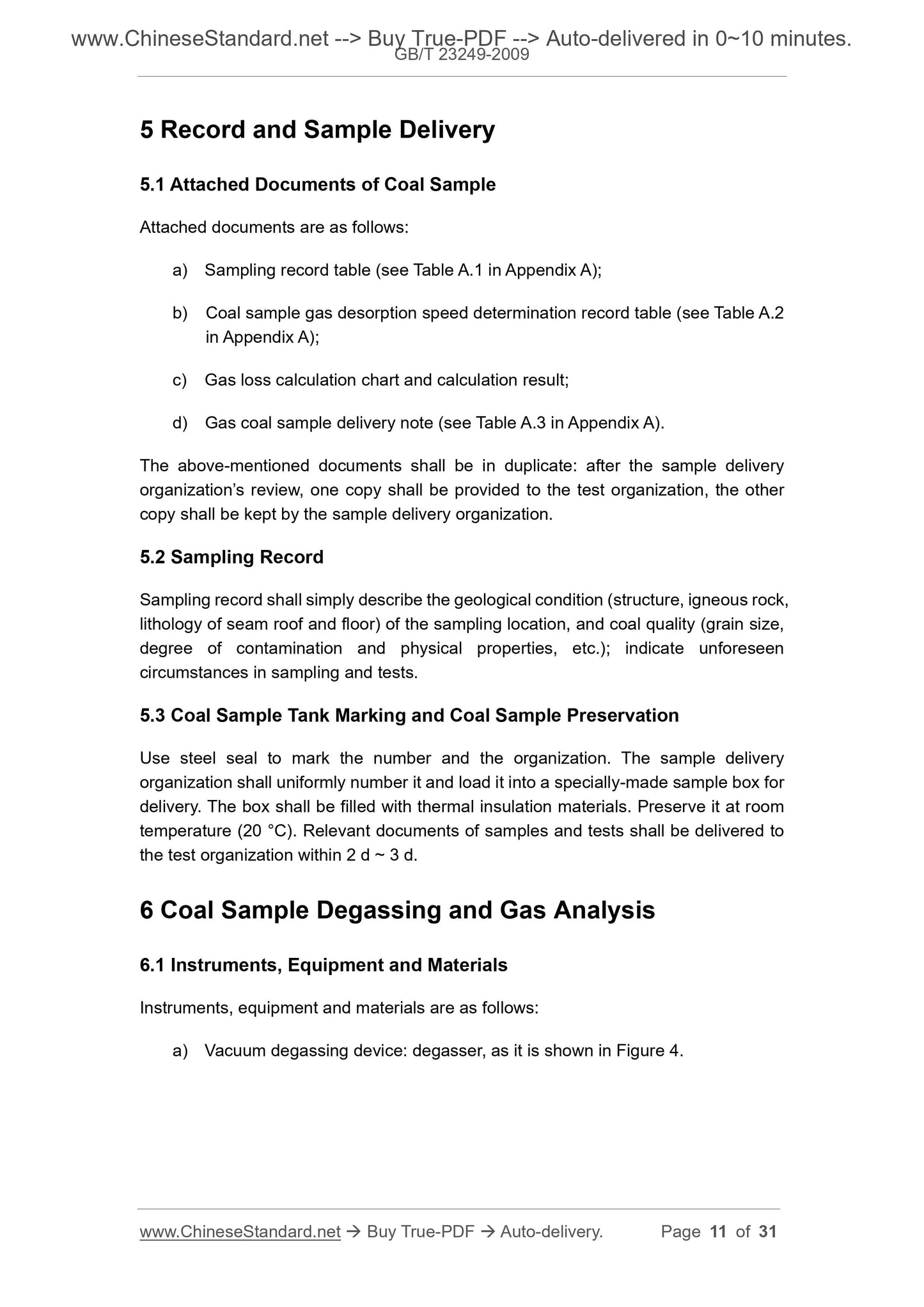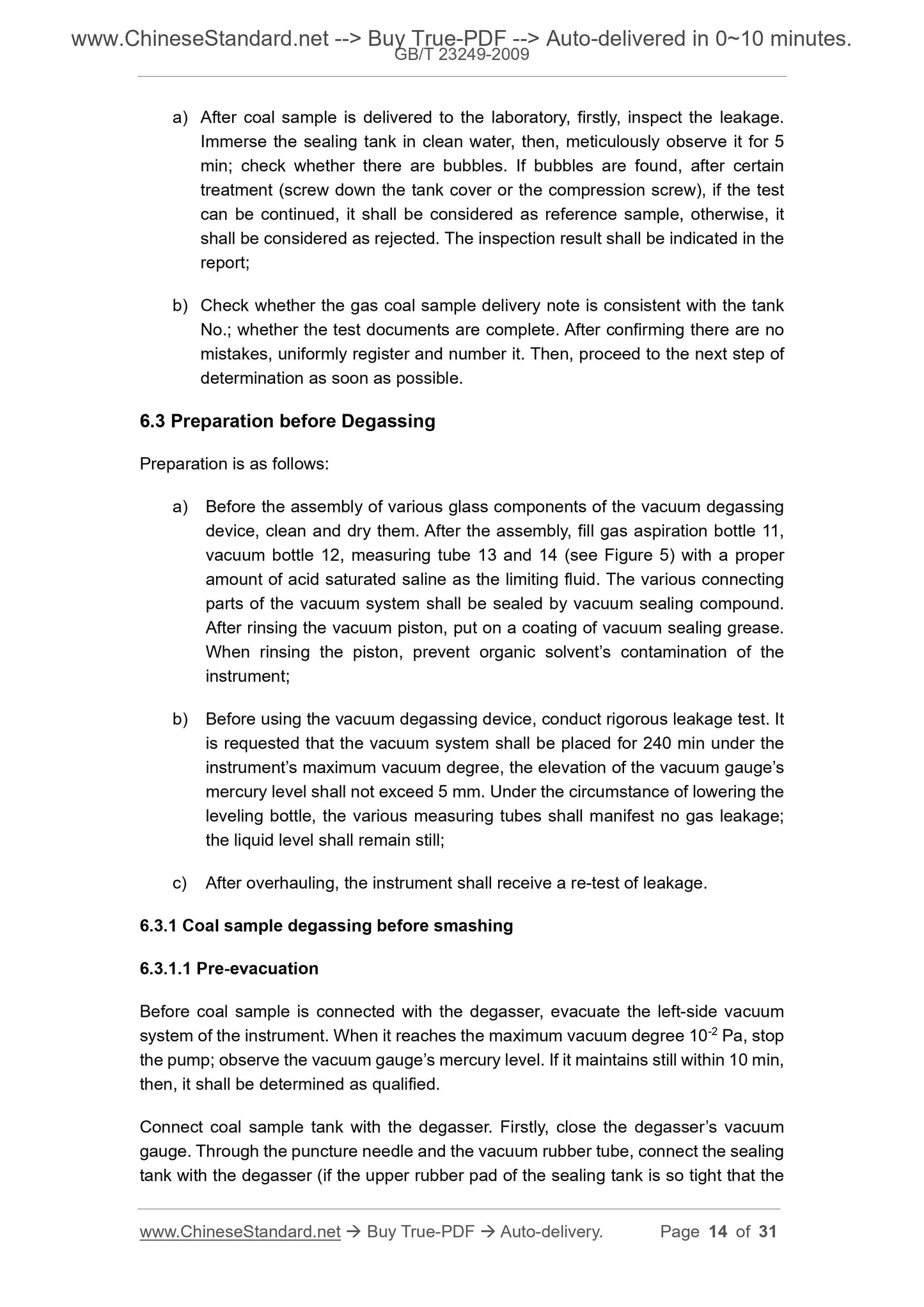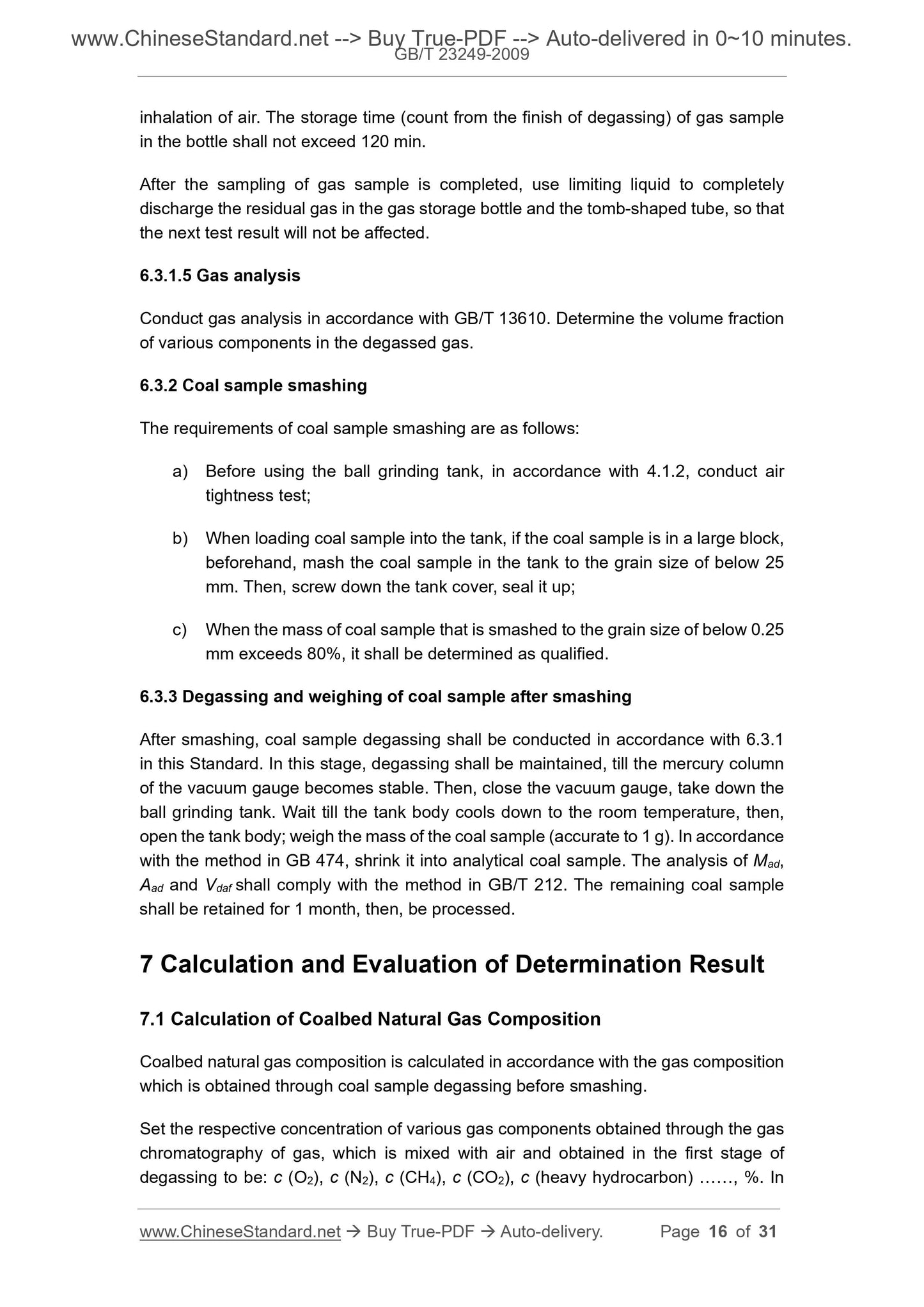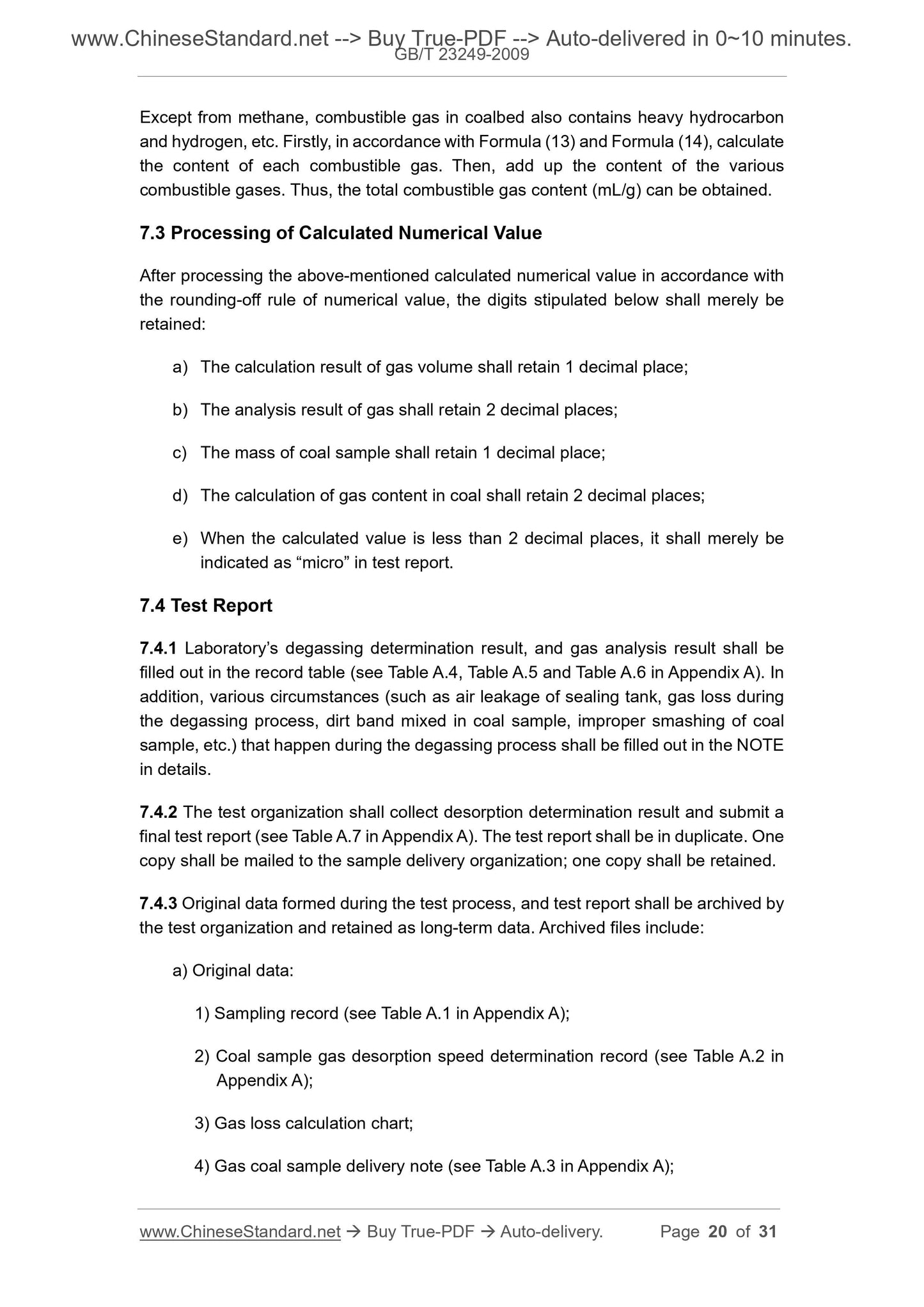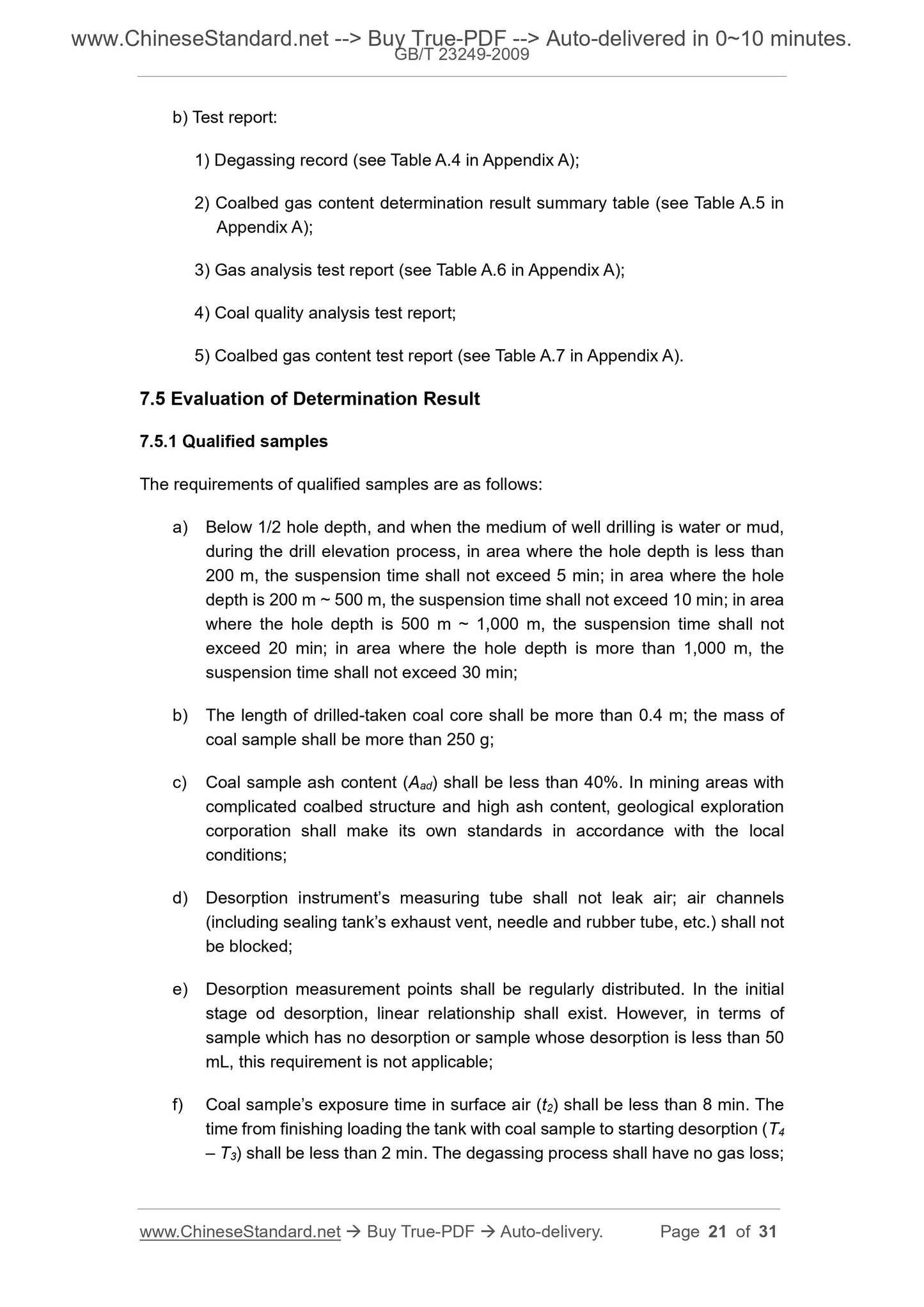1
/
of
10
www.ChineseStandard.us -- Field Test Asia Pte. Ltd.
GB/T 23249-2009 English PDF (GB/T23249-2009)
GB/T 23249-2009 English PDF (GB/T23249-2009)
Regular price
$230.00
Regular price
Sale price
$230.00
Unit price
/
per
Shipping calculated at checkout.
Couldn't load pickup availability
GB/T 23249-2009: Coalbed Gas Content Measurement Methods in Geological Exploration Period
Delivery: 9 seconds. Download (and Email) true-PDF + Invoice.Get Quotation: Click GB/T 23249-2009 (Self-service in 1-minute)
Newer / historical versions: GB/T 23249-2009
Preview True-PDF
Scope
This Standard stipulates the terms and definitions, measurement methods, recordsand sample delivery, coal sample degassing and gas analysis, determination result
calculation and evaluation of coalbed gas content in geological exploration period.
This Standard is applicable to the determination of coalbed gas content and gas
composition through coal core during the geological exploration period.
Basic Data
| Standard ID | GB/T 23249-2009 (GB/T23249-2009) |
| Description (Translated English) | Coalbed Gas Content Measurement Methods in Geological Exploration Period |
| Sector / Industry | National Standard (Recommended) |
| Classification of Chinese Standard | D09 |
| Classification of International Standard | 13.100 |
| Word Count Estimation | 24,217 |
| Date of Issue | 2009-03-11 |
| Date of Implementation | 2009-11-01 |
| Regulation (derived from) | National Standard Approval Announcement 2009 No.2 (Total No.142) |
| Issuing agency(ies) | General Administration of Quality Supervision, Inspection and Quarantine of the People's Republic of China, Standardization Administration of the People's Republic of China |
| Summary | This standard specifies the terms and definitions seam gas content geological survey period, determination, records and samples, coal sample degassing and gas analysis, measurement and evaluation of the results of the calculation. This standard applies to the process of taking in geological exploration of coal seam gas core determination of coalbed gas content and composition. |
Share
